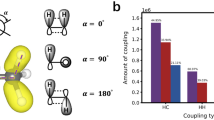Abstract
The relationships in multivariable data are intricate, and there are usually implicit associations between scalar values variables. However, existing association analysis methods lack spatial measurement of scalar values, and fail to collaboratively analyze the association between scalar values and variables. Thus association results may be one-sided. In this paper, we construct a scalar-value neighborhood graph to preserve the spatial information for scalar values and propose a graph neural network model composed of multiple graph convolutional layers and a self-attention mechanism for learning the low-dimensional vectors of scalar values and variables simultaneously. Several case studies show the scalability and flexibility of our method on analyzing the association between scalar values and variables.
Graphical abstract










Similar content being viewed by others
References
Berger M, Li J, Levine JA (2019) A generative model for volume rendering. IEEE Trans Visual Comput Gr 25(4):1636–1650
Biswas A, Dutta S, Shen HW, Woodring J (2013) An information-aware framework for exploring multivariate data sets. IEEE Trans Visual Comput Gr 19(12):2683–2692
Bruckner S, Möller T (2010) Isosurface similarity maps. Comput Gr Forum 29(3):773–782
Carr H, Duke D (2014) Joint contour nets. IEEE Trans Visual Comput Gr 20(8):1100–1113
Carr H, Geng Z, Tierny J, Chattopadhyay A, Knoll A (2015) Fiber surfaces: generalizing isosurfaces to bivariate data. Comput Gr Forum 34(3):241–250
Gu Y, Wang C (2011) Transgraph: hierarchical exploration of transition relationships in time-varying volumetric data. IEEE Trans Visual Comput Gr 17(12):2015–2024
Guo H, Xiao H, Yuan X (2012) Scalable multivariate volume visualization and analysis based on dimension projection and parallel coordinates. IEEE Trans Visual Comput Gr 18(9):1397–1410
Haidacher M, Bruckner S, Gröller E (2011) Volume analysis using multimodal surface similarity. IEEE Trans Visual Comput Gr 17(12):1969–1978
Han J, Tao J, Wang C Flownet: A deep learning framework for clustering and selection of streamlines and stream surfaces. IEEE Trans Visual Comput Gr (2018)
Han J, Wang C (2020) Tsr-tvd: temporal super-resolution for time-varying data analysis and visualization. IEEE Trans Visual Comput Gr 26(1):205–215
Han J, Zheng H, Xing Y, Chen DZ, Wang C (2020) V2v: a deep learning approach to variable-to-variable selection and translation for multivariate time-varying data. IEEE Ann Hist Comput 01:1–1
He W, Wang J, Guo H, Wang KC, Shen HW, Raj M, Nashed Y, Peterka T (2020) Insitunet: deep image synthesis for parameter space exploration of ensemble simulations. IEEE Trans Visual Comput Gr 26(1)
He X, Tao Y, Wang Q, Lin H (2018) Biclusters based visual exploration of multivariate scientific data. Proceedings of IEEE Scientific Visualization Conference (SciVis) 2018:40–45
He X, Tao Y, Wang Q, Lin H (2018) A co-analysis framework for exploring multivariate scientific data. Vis Inform 2(4):254–263
He X, Tao Y, Wang Q, Lin H (2019) Multivariate spatial data visualization: a survey. J Visual 22(5):897–912
Kehrer J, Hauser H (2012) Visualization and visual analysis of multifaceted scientific data: a survey. IEEE Trans Visual Comput Gr 19(3):495–513
Kingma DP, Ba J Adam (2015) A method for stochastic optimization. In: International Conference on Learning Representation, pp. 1–15
Kipf TN, Welling M (2016) Semi-supervised classification with graph convolutional networks. arXiv preprint arXiv:1609.02907
Leistikow S, Huesmann K, Fofonov A, Linsen L (2019) Aggregated ensemble views for deep water asteroid impact simulations. IEEE Comput Gr Appl 40(1):72–81
Li Q, Han Z, Wu XM (2018) Deeper insights into graph convolutional networks for semi-supervised learning. In: Proceedings of the AAAI Conference on Artificial Intelligence, vol. 32
Liu X, Shen HW (2015) Association analysis for visual exploration of multivariate scientific data sets. IEEE Trans Visual Comput Gr 22(1):955–964
Lu K, Shen HW (2017) Multivariate volumetric data analysis and visualization through bottom-up subspace exploration. Proceedings of IEEE Pacific Visualization Symposium (PacificVis) 2017:141–150
Lukasczyk J, Garth C, Weber GH, Biedert T, Maciejewski R, Leitte H (2019) Dynamic nested tracking graphs. IEEE Trans Visual Comput Gr 26(1):249–258
Lukasczyk J, Weber G, Maciejewski R, Garth C, Leitte H (2017) Nested tracking graphs. Comput Gr Forum 36(3):12–22
Porter WP, Xing Y, von Ohlen BR, Han J, Wang C (2019) A deep learning approach to selecting representative time steps for time-varying multivariate data. Proceedings of IEEE Scientific Visualization Conference (SciVis) 2019:40–45
Rousseeuw PJ (1987) Silhouettes: a graphical aid to the interpretation and validation of cluster analysis. J Comput Appl Math 20:53–65
Sauber N, Theisel H, Seidel HP (2006) Multifield-graphs: an approach to visualizing correlations in multifield scalar data. IEEE Trans Visual Comput Gr 12(5):917–924
Sukharev J, Wang C, Ma KL, Wittenberg AT (2009) Correlation study of time-varying multivariate climate data sets. Proceedings of IEEE Pacific Visualization Symposium (PacificVis) 2009:161–168
Wang C, Tao J (2017) Graphs in scientific visualization: a survey. Comput Gr Forum 36(1):263–287
Wong AM, Hartiganm AJ (1979) Algorithm as 136: a k-means clustering algorithm. J Roy Stat Soc 28(1):100–108
Xu K, Li C, Tian Y, Sonobe T, Kawarabayashi Ki, Jegelka S (2018) Representation learning on graphs with jumping knowledge networks. In: International Conference on Machine Learning, pp. 5453–5462. PMLR
Acknowledgements
This work was supported by National Natural Science Foundation of China (61972343).
Author information
Authors and Affiliations
Corresponding authors
Additional information
Publisher's Note
Springer Nature remains neutral with regard to jurisdictional claims in published maps and institutional affiliations.
Rights and permissions
About this article
Cite this article
He, X., Tao, Y., Yang, S. et al. ScalarGCN: scalar-value association analysis of volumes based on graph convolutional network. J Vis 25, 77–93 (2022). https://doi.org/10.1007/s12650-021-00779-7
Received:
Revised:
Accepted:
Published:
Issue Date:
DOI: https://doi.org/10.1007/s12650-021-00779-7




